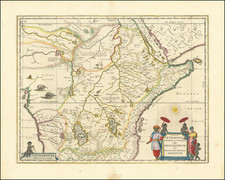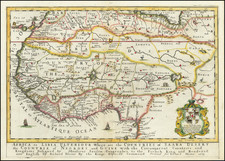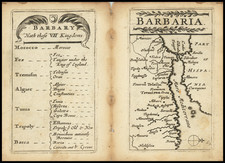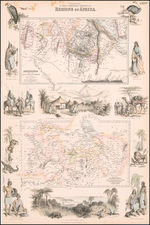Annotated by An Early Owner -- Road Map of Colonial French Sudan
The map entitled "Colonie du Soudan Français - Carte Routière" was drafted by the Geographic Service of French West Africa (A.O.F.) in Dakar, relying on information provided by the Government of Sudan and the surveys and itineraries of the Officers and Non-Commissioned Officers of the Geographic Service in the year 1927.
The present example includes pencil notes, primarily distances but in several cases new roads and added towns (Fana, Bole, Dioila) in the area between Bamako, Bougouni, Sikasso and Segou.
This map of French Sudan (present-day Mali), meticulously delineated with political and geographic precision, reflects the French colonial administration's intent to chart and manage its West African territories. The map is focused on the colonial infrastructure with symbols designating roads accessible year-round, seasonal roads, principal non-automobile tracks, distances in kilometers, as well as locations of posts, telegraphs, telephones, radiotelegraph stations, customs, and ferries.
The legend provided clarifies the map's symbology: red solid lines for year-round motorable roads, red dotted lines for seasonal roads, and blue dashed lines for the main non-automobile tracks. The solid and dashed lines demarcate the boundaries of the state, colony, and administrative circles. Moreover, the map outlines the chief towns of colonies, circles, and subdivisions, as well as village locations, presenting a hierarchical structure of colonial governance.
In the broader historical context, French Sudan was a constituent territory of French West Africa, a federation that spanned several modern-day nations from 1880 until 1959, when it joined the Mali Federation. The French colonial endeavor in Sudan was marked by efforts to control the economic and political landscapes, which included the establishment of infrastructure to facilitate administrative governance and resource extraction.
The map was issued during a period of agricultural development. Following successful tests of growing Egyptian cotton in West Africa during World War I, Émile Bélime began to campaign for the construction of a large irrigation system along the Niger River. Starting in 1921, significant irrigation projects around Koulikoro and later at Baguinéda-Camp and the Ségou Cercle began to bring water, in hopes of creating cotton growing centers to rival Egypt and the United States.
The French Sudan irrigation project initially and unsuccessfully relied on families voluntarily resettling along lines established by the colonial authority, before moving to forced resettlement to the cotton project. The Office du Niger was founded in 1926 as the main organization facilitating planned, irrigated agricultural projects, but was ultimately unsuccessful in creating a meaningful cash crop.
Rarity
We locate 2 examples (1) Bibliotheque National de France and (2) Staatsbibliothek Berlin.














![Secunda Africa Tabula [North Africa, Malta, Sicily, and Sardinia]](https://storage.googleapis.com/raremaps/img/small/72485.jpg)

![Fezzae et Marocchi Regna Africae Celeberrima, describebat Abrah: Ortelius. [Fez and Morocco, the most famous Kingdoms of Africa, as described by Abraham Ortelius]](https://storage.googleapis.com/raremaps/img/small/94255.jpg)